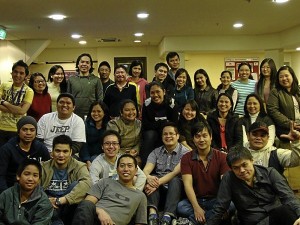
There is indeed a wide disparity between universities in the Philippines and those overseas. Aside from the extent of academic resources and quality of facilities, the difference also lies in the learning environment that shapes and influences the students’ academic development.
This observation is based on personal experiences studying here and abroad. After graduating with a Masters degree in Asian Studies at the University of the Philippines (UP), I had an opportunity to pursue another graduate program at the Australian National University (ANU). I completed a Masters degree in International Affairs through the Endeavour Awards, one of Australian government’s merit-based scholarship programs.
My experiences in UP and ANU, gave me insights into the differences in the two countries’ educational systems. This made me reflect on how Philippine universities can improve.
Learning experience at UP
One of the obvious disparities between Australian and Philippine education are resources. Unlike in ANU that enjoys adequate government funding, UP has to eternally contend with budget cuts. This is evident in the lack of academic resources and low support for research and development. Students at the UP often make do with dilapidated facilities and out-of-date technology.
Given this condition in UP, classroom experiences are more conventional, relying heavily on traditional communication between professors and students. If a class is fortunate enough to have a projector, then power point presentations are used. Otherwise, markers and white boards are still the main tools used in class.
For most classes in UP and in other local universities, the main source of learning is the professors. The students, meanwhile, provide feedback on the lectures by asking questions and sharing opinions, although this does not always result in engaging discussions among fellow students in class.
Meanwhile, course requirements in UP are considered to be rigid and tedious. It is composed of a heavy workload of research papers, class presentations, book reviews, and exams.
Learning Experience at ANU
With wider resources, Australian education evidently provides a more varied learning environment for its students. As a Filipino student going to Australia, I experienced a bit of “technological shock,” what with the modern facilities and wide resources that provide conveniences and enhance learning of students.
In ANU, for instance, some of the classes in my Asia Pacific Security course had live video conferencing sessions with other students and faculty from other universities such as University of Pittsburg (USA), Beijing University (China), Keio University (Japan), Yonsei University (South Korea), and Nanyang Technological University (Singapore). These sessions facilitated insightful discussions and provided real-time interactions with other students in the same field.
Meanwhile, during regular class sessions, learning is promoted not only through the lectures of professors, but also through discussions among students. While they are considered experts in their fields, the professors are not considered as “masters” but facilitators, sharing their knowledge and guiding discussions in class. Essentially, open discussions and stirring debates are encouraged among students with the notion that everybody has something to contribute, and that everyone can learn something from each other. The professors fully take advantage of the diversity of the students in class who have different nationalities, cultures, ethnicities and religions that are manifested in class discussions. Thus, the professors learn from the students as much as the students learn from them.
Course assessments at ANU usually include essays of about 3,000 words each, demanding serious analysis and coherence of ideas from students. These essays, unlike research papers, require reading and scrutinizing various books and journals on a certain topic to produce an argument. Each student is expected to take a stand on a selected subject and defend it based on the various academic sources. I ultimately learned from my academic experience in ANU that for issues as complex as those discussed in international relations, there are no right or wrong ideas, only well-defended arguments.
These disparities point to ways higher institutions in the Philippines can learn and improve: There should be a constant upgrade on how lessons are taught and learned—to have less memorization and more analysis; to be less methodical and more innovative, analytical, and engaging. Most importantly, there should also be a paradigm shift in how education is appreciated—not just as a way to get a necessary diploma, but as a handy life tool that is practical, useful, and applicable.
Despite the currently poor performance of the country’s universities against other academic institutions in the world, there is no reason why Philippine universities cannot catch up. Though faced with minimal government support and lack of funding (common problems also encountered in other institutions from developing countries), local universities can still pride themselves with the talents and aptitude of Filipino students.
This is evident in the high regard for Filipino students studying overseas, mostly under different scholarship grants. In ANU, most of these scholars are making waves and doing the country proud for their academic excellence and significant contributions to society. They are in diverse fields such as Applied Anthropology, Development Economics, Diplomacy, Public Policy, Environmental Management, Natural Hazards and Disasters, among others. They are often commended for their intellectual abilities, leadership skills, fluency in English, openness to new ideas, adaptability in different learning styles, and confidence in interacting within a multicultural environment.
This ought to be a wake up call for government and academic authorities to improve on the learning environment and knowledge building of Filipinos. This is especially vital since most Filipinos are going abroad for study or work. Thus, Philippine higher education should quickly adapt to a rapidly changing academic environment to groom Filipinos toward becoming more globally competitive.
My academic experiences here and abroad has made me realize that, despite the rankings, many Filipino students can climb to the top of their class in universities abroad.
The author is currently working for the Foreign Service Institute of the Department of Foreign Affairs and recently came back from my postgraduate studies in Australia.